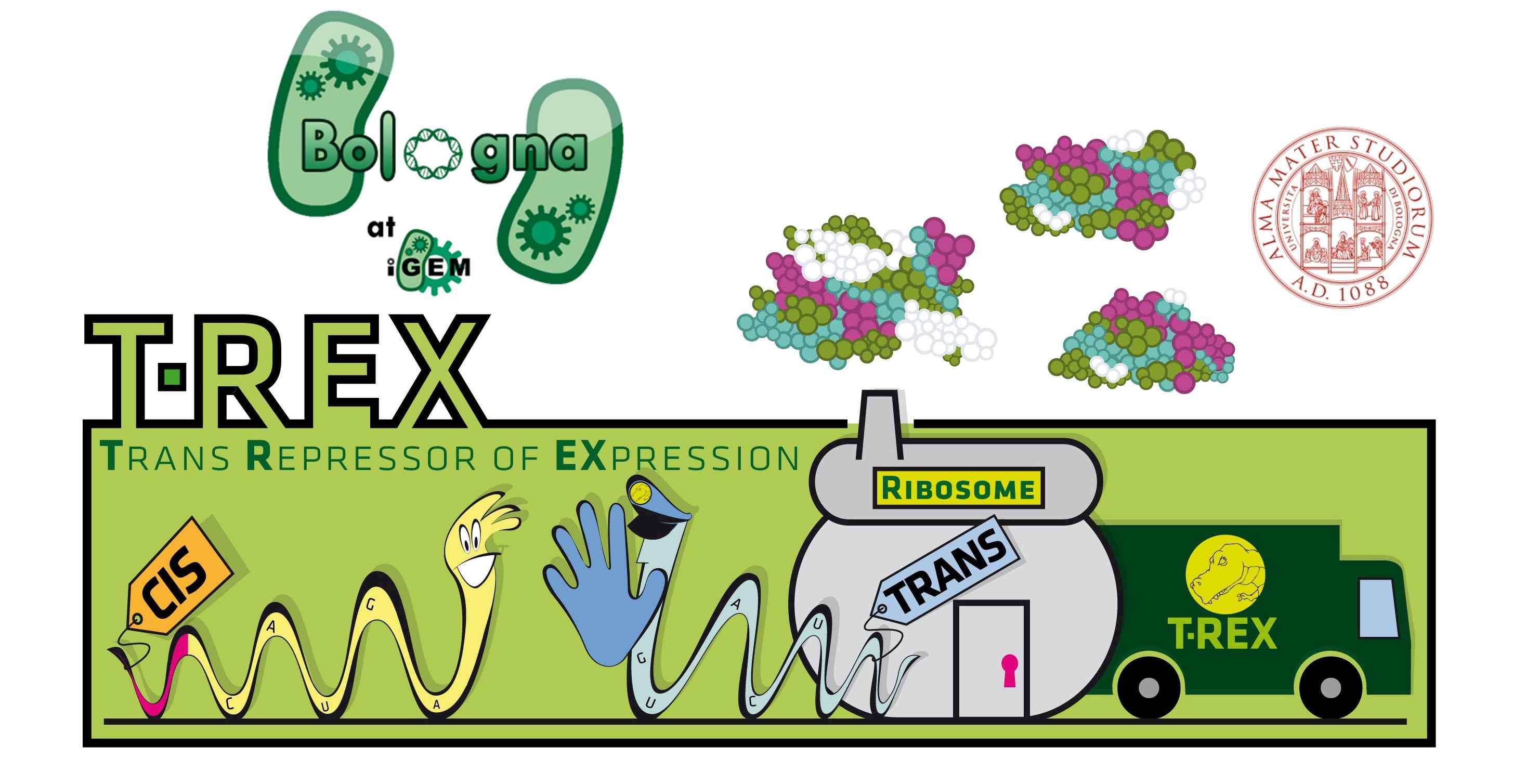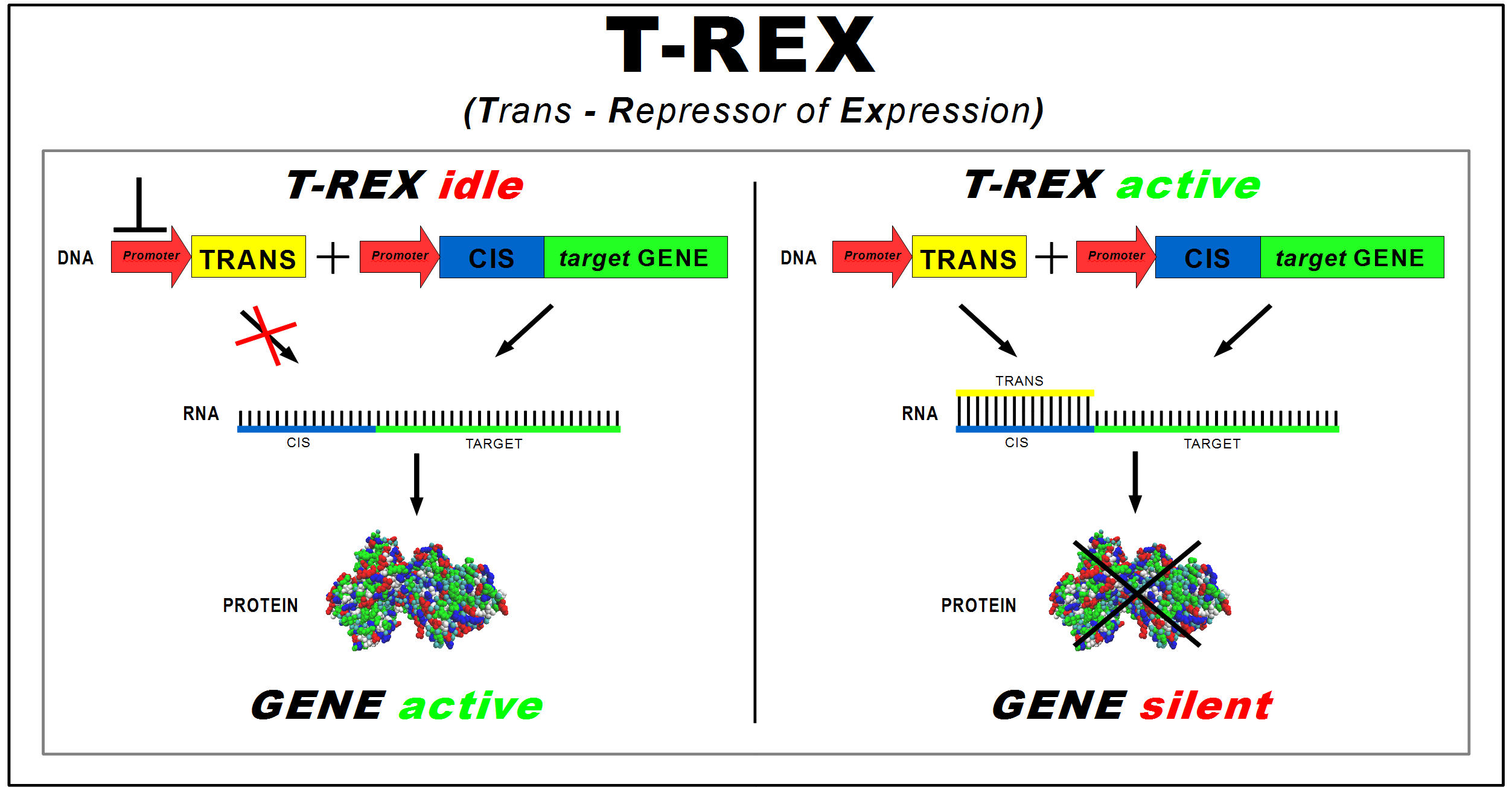Team:Bologna
From 2009.igem.org
Marco.cavina (Talk | contribs) |
Marco.cavina (Talk | contribs) |
||
| Line 60: | Line 60: | ||
[[Image:SSebastiano.jpg|left|200px]] | [[Image:SSebastiano.jpg|left|200px]] | ||
| - | <br><br><br><br><br><br><br> | + | <br><br><br><br><br><br><br><br> |
---- | ---- | ||
Revision as of 11:44, 21 October 2009
| HOME | TEAM | PROJECT | SOFTWARE | MODELING | WET LAB | PARTS | HUMAN PRACTICE | JUDGING CRITERIA |
|---|
Project Summary
Which is our idea?
The project aims to implement a protein synthesis regulation system in Escherichia coli that acts at translational level regardless of the target gene to be downregulated. This "general-purpose" device could allow a faster control of protein expression. Our device was named T-Rex (Trans Repressor of Expression). It consists of two new BioBricks, i.e. the Trans-repressor and the Cis-repressing.
How can we achieve our goal?
The TRANS-repressor is a non-coding DNA sequence that acts as a silencer of the CIS-repressing mRNA. In fact, the Cis-repressing sequence includes a TRANS-repressor complementary region ending with a ribosome binding site (RBS). Moreover, it is assembled upstream of the target gene coding sequence. When the TRANS-repressor and the CIS-repressing mRNAs bind together, the RBS recognition by the ribosome is prevented. Thus, the TRANS-repressor amount regulates the gene mRNA translation rate.
The TRANS-repressor sequence was determined by a computational analysis performed to minimize the interference with the genomic mRNAs and to maximize the base-pairing interaction to the CIS-repressing RNA.
We developed the following genetic circuit in order to test and characterize our T-Rex device:
The T-REX device is proposed as a universal and fast switch in synthetic gene circuits.
More details about our work in the Project section.
Acknowledgements
- [http://www.unibo.it/Portale/default.htm University of Bologna]
- [http://serinar.criad.unibo.it Ser.In.Ar. Cesena]
- Cultural Association San Sebastiano
 "
"






